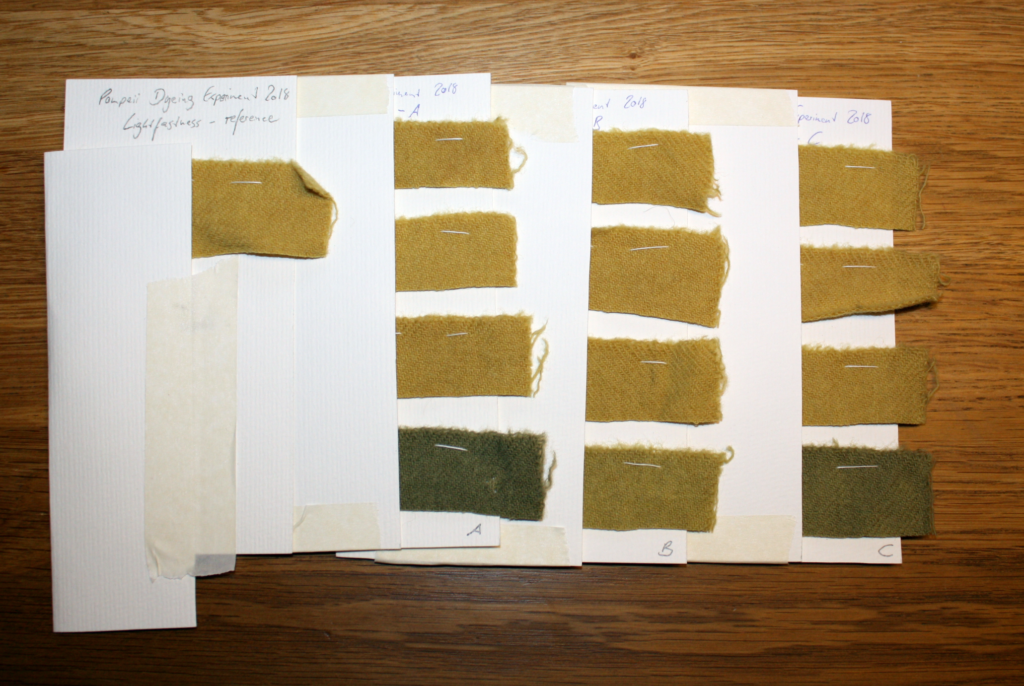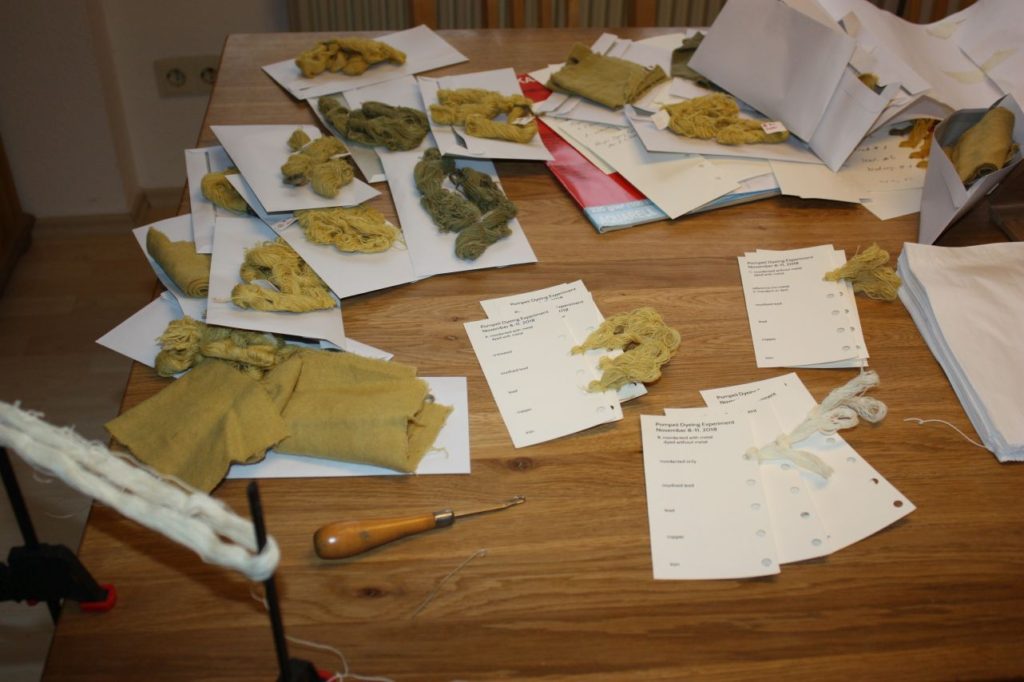There's been comments about the lightfastness test setup which, in most cases for hobby and smallscale professional dyers, consists of picking a south-facing window and sticking stuff in there for a given amount of time... which is very obviously not a scientific way for evaluating lightfastness.
First of all, though - let's take a closer look at the things that happen when light hits that textile. I've brushed up my knowledge a little bit, but please note that I'm not an expert, and I'm going to put what happens, as I understood it, into very simple terms. If you want the nitty gritty details, you can check out "Chemical Principles of Textile Conservation" by Agnes Timar-Balazsy and Dinah Eastop (published 1998), where pages 88-92 and 225-232 will bring you many insights.
Basically, what happens is that the light hitting the fabric inserts energy, and this energy can cause chemical reactions on molecular levels. One of these processes is photolysis, where bonds in the dye molecules are destroyed, leading to a different chemical structre and thus a change or loss of colour.
The second process, and even more important than straight photolysis, is photo-oxidation. When this happens, a carbonyl group in the dye molecule changes to carboxyl group, leading to a shortening of the dye molecule and thus a colour fade. This process is usually slower if humidity is very low, and can also be slowed down by an atmosphere with less oxygen (though some colours may fade faster in a vacuum - so you can't be sure if that is good or not). Metals including iron and copper, as well as their compounds, can aid photo-oxydation. Even nastier about this process is that it can result in active radicals such as hydrogen peroxide, which is a bleaching agent, speeding up the fading of the textile.
Different dye molecules are more or less prone to these reactions to light, which explains the varying lightfastness levels of dyes. Both UV light and visible light provide energy for these reactions, but the wavelengths do make a difference.
So... now that we all know, more or less precisely, what happens when the dyes fade, we can get back to testing.
First of all, though - let's take a closer look at the things that happen when light hits that textile. I've brushed up my knowledge a little bit, but please note that I'm not an expert, and I'm going to put what happens, as I understood it, into very simple terms. If you want the nitty gritty details, you can check out "Chemical Principles of Textile Conservation" by Agnes Timar-Balazsy and Dinah Eastop (published 1998), where pages 88-92 and 225-232 will bring you many insights.
Basically, what happens is that the light hitting the fabric inserts energy, and this energy can cause chemical reactions on molecular levels. One of these processes is photolysis, where bonds in the dye molecules are destroyed, leading to a different chemical structre and thus a change or loss of colour.
The second process, and even more important than straight photolysis, is photo-oxidation. When this happens, a carbonyl group in the dye molecule changes to carboxyl group, leading to a shortening of the dye molecule and thus a colour fade. This process is usually slower if humidity is very low, and can also be slowed down by an atmosphere with less oxygen (though some colours may fade faster in a vacuum - so you can't be sure if that is good or not). Metals including iron and copper, as well as their compounds, can aid photo-oxydation. Even nastier about this process is that it can result in active radicals such as hydrogen peroxide, which is a bleaching agent, speeding up the fading of the textile.
Different dye molecules are more or less prone to these reactions to light, which explains the varying lightfastness levels of dyes. Both UV light and visible light provide energy for these reactions, but the wavelengths do make a difference.
So... now that we all know, more or less precisely, what happens when the dyes fade, we can get back to testing.





 Work in progress - I'm less than halfway through here. Altogether, it's four sets of three cards with five skeins each, so it's sixty samples to wind and attach. Can you feel the boredom oozing through the picture?
Work in progress - I'm less than halfway through here. Altogether, it's four sets of three cards with five skeins each, so it's sixty samples to wind and attach. Can you feel the boredom oozing through the picture?